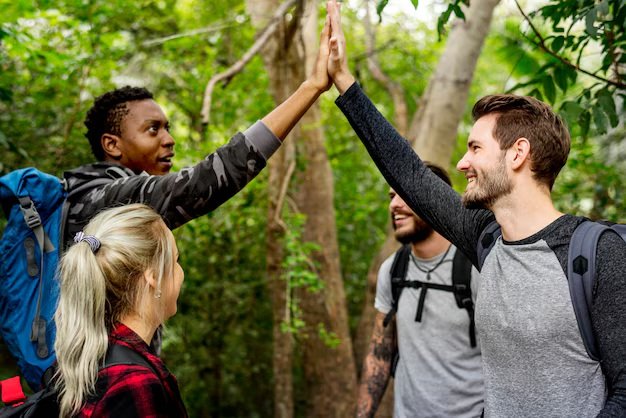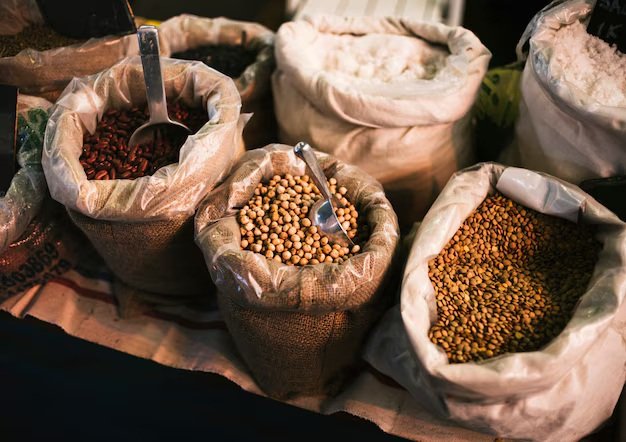10 Wildlife Conservation Programs for Endangered Species
In a recent global study, scientists shared some uplifting news—more than half of the world’s sea turtle populations are starting to recover. This progress comes after decades of hard work through conservation efforts like protecting nesting sites, introducing sustainable fishing practices, and putting strong wildlife laws in place. It’s a powerful reminder that protecting wildlife isn’t just a hopeful idea—it actually works when people stay committed.
But the real story goes beyond the numbers. In Belize, volunteers get up before sunrise to walk the beaches, keeping turtle nests safe. Along Ghana’s coast, educators visit schools to teach kids why these turtles matter and how to protect them. In parts of Mexico, fishermen have adapted their gear so that turtles can escape nets unharmed. These aren’t faraway government programs—they’re personal missions led by everyday people who believe extinction isn’t the end of the story.
In this article, we will explore conservation programs that are making a real difference for endangered species—from snow leopards in Asia to tiny potoroos in Australia. These efforts combine science, local knowledge, and a deep sense of care. Together, they show what’s possible when we choose to work with nature instead of against it.

In This Article
- 1. Project Tiger (India)
- 2. International Rhino Foundation & Rhino Protection Units (Indonesia & Zimbabwe)
- 3. Western Shield (Australia)
- 4. Mountain Gorilla Conservation (Rwanda, Uganda, DRC)
- 5. Serengeti Elephant & Predator Initiative (Tanzania)
- 6. San Diego “Frozen Zoo” (USA)
- 7. Mojave Desert Bighorn “Guzzler” Network (California)
- 8. Western Snow Leopard & Mountain Ecosystems (Central Asia)
- 9. Orangutan Rehabilitation (Borneo & Sumatra)
- 10. Red Panda Network (Nepal, India, China)
- Tech-Driven Conservation Enhancers
- Actionable Takeaways for Supporters & Advocates
- Conclusion
1. Project Tiger (India)
Since its start in 1973, Project Tiger has been the backbone of tiger conservation in India. The initiative has not only survived but thrived—today India is home to around 3,682 wild tigers, which is nearly 75% of the world’s total, growing at roughly 6% annually.
Program Mechanics
- Oversees 58 designated tiger reserves under the National Tiger Conservation Authority (NTCA).
- Deploys camera traps, wireless telemetry, and the M-STrIPES patrol system to monitor movement and prevent poaching.
- Runs specialised anti-poaching squads and implements conflict-mitigation strategies between communities and wildlife.
- Encourages voluntary relocation of human settlements from core tiger habitats to reduce pressure and expand safe breeding space.
Real‑World Insight
In the Sariska Tiger Reserve, all tigers were lost by 2004 due to unchecked poaching. Since then, a carefully planned reintroduction effort has helped rebuild the population. “We started with just a few relocated tigers and a lot of hope,” one local ranger shared in a 2023 NTCA field update. Today, Sariska supports around 40 wild tigers, including breeding females and a growing cub count—a remarkable turnaround rooted in habitat restoration and dedicated patrol teams.
Recent Developments
Tigers are now expanding beyond reserve boundaries—for example, Karnataka recently rescued cubs and plans to upgrade MM Hills Sanctuary, according to a report by The Times of India. Overall, tiger deaths have dropped sharply, with a 37% decline in 2024 mortalities, according to the NTCA. Community programs like “Wild Scouts” teach children safe coexistence, further reducing conflict.

2. International Rhino Foundation & Rhino Protection Units (Indonesia & Zimbabwe)
The International Rhino Foundation (IRF) aggressively protects Javan, Sumatran, and black rhinos through elite anti‑poaching teams in Indonesia and Zimbabwe.
Program Mechanics
- Sumatran Rhino Rescue Alliance conducts surveys, translocations, and breeding under emergency plans.
- In Indonesia, 16 Rhino Protection Units operate across Bukit Barisan, Way Kambas, and Ujung Kulon parks to remove snares, apprehend poachers, and use intelligence for prevention.
- Units use innovative tools like floating patrol stations on rivers to stop incursions.
Results
- Fewer than five Sumatran rhinos have been poached since the program’s inception—no Javan rhino losses
- Zimbabwe’s Bubye Valley now supports over 100 black rhinos born in captivity by 2012, a turnaround from earlier declines.
Expert Voice
The IRF director emphasizes: “Intelligence‑driven patrols prevent poaching, not just respond to it.” This proactive model—grounded in data—ensures protection before threats arise.

3. Western Shield (Australia)
Since 1996, Western Australia’s Western Shield program has been a frontline defender of its native wildlife, covering an astonishing 3.8 million hectares with its predator-control efforts. By deploying around 770,000 bait drops every three months via aircraft, the program effectively suppresses feral foxes and cats, which remain the biggest threat to many vulnerable species.
Highlights
- Western Shield protects more than 30 threatened species, from numbats and quokkas to the critically endangered Gilbert’s potoroo. These marsupials, once thought extinct, now persist with a small but self‑sustaining population thanks to concerted control efforts.
- By reducing fox numbers by over 80%, the program has triggered population rebounds: native mammals like woylies, chuditch, and numbats have tripled in recovery zones compared to unmanaged areas.
- Since 2022, a $1 million injection from the Alcoa Foundation supports predator surveillance and the rollout of Eradicat® bait, bolstering ongoing predator control and native wildlife monitoring.
Challenges & Outlook
While initial success has been remarkable, the program now faces new hurdles, including controlling feral cats more effectively and expanding efforts to more arid, desert landscapes. Researchers emphasise the importance of adapting strategies to these evolving threats.
4. Mountain Gorilla Conservation (Rwanda, Uganda, DRC)
In the Virunga Range spanning Rwanda, Uganda, and the DRC, intensive protection over recent decades has helped mountain gorilla numbers grow to over 1,000 individuals—an inspiring reversal for a species once on the brink.
Community-Driven Success
- Ecotourism is central: hikers pay up to $1,500 per trek, and gorilla tourism now makes up roughly 60% of Rwanda’s tourism revenue, over $300 million in 2023
- Local programs like the Sabyinyo Silverback Lodge enable villages to own and reinvest earnings into schools, clinics, and clean water initiatives—their stake in conservation pays dividends.
- Since 2022, projects like the Ellen DeGeneres Campus have supported reforestation and trained locals and scientists, blending sustainable tourism with habitat restoration.
One Rwandan tracker shared: “When families flourish, gorillas do too—it’s inextricably connected.” This sentiment embodies the philosophy behind conservation: by backing communities, we ensure gorillas thrive too.
Looking Ahead
To keep the momentum, Rwanda is expanding Volcanoes National Park by 23%, creating space to reduce conflicts and boost gorilla survival. Rwanda’s model—empowering locals, enforcing strict tourism protocols, and reinvesting revenue—sets a high bar for endangered species conservation worldwide.

5. Serengeti Elephant & Predator Initiative (Tanzania)
Since anti-poaching patrols intensified in the 1980s, the Serengeti landscape has rebounded. Elephant numbers climbed from around 6,000 in 2014 to over 7,000 by 2020, and buffalo populations also surged—thanks to stronger law enforcement and community support. Meanwhile, black rhinos, cheetahs, and African wild dogs have seen encouraging population increases, bolstered by targeted monitoring and protection efforts.
Key Metrics
- Elephants: ~6,000 → 7,000+ (2014–2020)
- Wild dogs: Grew from single digits in 2010 to over 200 by 2021 (local estimates)
- ZSL AI camera‑trap network: These smart cameras help rangers pinpoint poacher activity, making patrols more strategic and reducing wildlife loss.
6. San Diego “Frozen Zoo” (USA)
A visionary cryobank run by the San Diego Zoo Wildlife Alliance. Over 11,500 samples (cells, gametes, embryos) from more than 1,337 species have been preserved in liquid nitrogen since the 1970s.
Notable Outcomes
- Przewalski’s horse cloned: Foals Kurt (2020) and Ollie (2023) were created from cells preserved in the zoo’s collection.
- First plant inclusion: The endangered Nuttall’s scrub oak was successfully cryopreserved in 2023—a vital step since traditional seed banks can’t protect it.
- Global aim: To preserve genetic material from every endangered species by 2075, collaborating with IUCN and field partners in Kenya, Vietnam, Peru, and Hawai’i.
7. Mojave Desert Bighorn “Guzzler” Network (California)
In California’s Mojave Desert, conservationists have engineered hidden water systems—called “guzzlers”—to help desert bighorn sheep survive droughts. These camouflaged catchments collect rainwater and feed it into troughs. When the rains fail, volunteers haul truckloads of water to refill them. These guzzlers weren’t just a nice-to-have: since they were installed starting around the 1960s, they’ve helped boost the bighorn population by about 80% and led the sheep to reclaim roughly half of their former habitat.
Impact
- Population: now approximately 4,250 individuals.
- Habitat recovery: Sheep have returned to ~50% of their historic range.
- Cost & scale: each guzzler costs ~$30,000, with over 90 installed on state‑leased parcels.
8. Western Snow Leopard & Mountain Ecosystems (Central Asia)
Across the rugged mountains of Central Asia, a multifaceted program defends the elusive snow leopard. It includes anti-poaching patrols, community education, livestock protection, and extensive camera‑trap monitoring. In Kyrgyzstan, groups like NABU, CAMI, and the Snow Leopard Trust have empowered local communities to monitor and report illegal hunting using tools like SMART. This collective action recently led to the first camera‑trap sighting of a snow leopard in the Kara‑Kujur conservancy.
Results
- Poaching down, law enforcement strengthened.
- Herders now use non‑lethal methods like predator‑proof corrals and compensation schemes.
- A 2020–2024 study in Kyrgyzstan recorded an estimated 285 adult snow leopards—a rise from ~150–200 two decades ago.

9. Orangutan Rehabilitation (Borneo & Sumatra)
Orangutans, now reduced to mere tens of thousands, are facing severe habitat loss across Borneo and Sumatra. Rehabilitation centres—like Nyaru Menteng II in Borneo—rescue orphaned or displaced orangutans from logging areas, oil palm plantations, and the illegal pet trade. Here, young orangutans attend “forest schools,” learning vital survival skills such as nest-building, foraging, and social interaction. According to a February 2025 update from the Borneo Orangutan Survival Foundation, the new centre spans 132 hectares and features improved forest-school facilities, veterinary clinics, and enrichment sites designed to mimic their natural habitat.
Challenges
These centres face relentless pressures: expanding palm-oil plantations, illegal logging, and ongoing stress on the animals during transport and rebuilding. A Reddit post from February 2025 shared concerns that recent funding freezes from USAID and US Fish & Wildlife could significantly impact habitat protection and release operations. Additionally, skin irritations from toxic flora in release areas have been reported, prompting medical teams to adjust treatment plans accordingly.
Successes
Despite obstacles, the rehabilitation model has shown clear wins. In April 2025, six orangutans—rescued and rehabilitated at Samboja Lestari and Samboja—were released into Kehje Sewen Forest in East Kalimantan; post-release monitoring indicated strong adaptation and even mating behaviour. Nyaru Menteng II has since opened several pre-release “sanctuary islands,” reducing stress by giving orangutans a cage-free environment before full release. Long-term monitoring suggests few cases of recapture or return, underlining their success. International partnerships and sustainable funding help keep these programs going strong—evidence that with the right support, orangutans can be guided safely back into the wild.

10. Red Panda Network (Nepal, India, China)
Globally, there are fewer than 10,000 red pandas. In Nepal, estimates suggest between 500 and 1,000 individuals survive in the wild, protected in part by community-led initiatives. The Red Panda Network (RPN) and local partners focus on restoring forest habitats and empowering villagers to care for their bamboo-dependent neighbours.
Approach
- Community Forest User Groups collaborate to protect and regenerate red panda habitat and set up anti-poaching patrols across dozens of community forests in eastern and western Nepal.
- Eco‑tourism and homestays funded by partnerships like RPN and local NGOs offer alternative livelihoods, such as burlap weaving and eco-guide services. Chandra Kumari Limbu shared, “We plant bamboo to protect pandas and harvest honey to feed our families.”
- Cameras and wildlife surveys record roughly 1,000 sightings of red pandas annually, helping to track population trends and inform conservation strategies.
Impact
Poaching incidents in target areas dropped dramatically—from an average of ten per year to nearly zero in recent years—as wildlife crime units and community patrols became active. The establishment of Nepal’s first community red panda conservation forest in Ilam (116 ha) further strengthens habitat protection. International collaborations, such as grants from Fondation Segré and coordinated governance standards developed by RPN and universities, further support these efforts.

Tech-Driven Conservation Enhancers
AI Acoustic Monitoring
Solar-powered microphones like Rainforest Connection’s “Guardians” and Cornell’s Elephant Listening Project record forest sounds nonstop. AI then flags unusual events—chainsaws, gunshots, or distinctive animal calls. According to a 2023 white paper by RFCx, this approach is non-invasive, cost-effective, and tracks biodiversity recovery against international targets. In Costa Rica, remote bioacoustic sensors analysed by AI are helping researchers detect bellbird activity and signal early ecosystem changes.
Camera‑Trap AI
Organisations like ZSL are deploying machine-vision tools to process massive troves of camera‑trap images, freeing up teams from hours of human sorting and enabling faster species monitoring.
PAWS & SMART Patrol Platforms
AI tools such as PAWS—integrated with WWF’s SMART—use historical poaching data to build risk‑maps and predict where illegal activity will hit next. Field trials in Uganda and Cambodia showed over 1,000 snares removed and a measurable drop in poaching activity.
Cryopreservation (“Frozen Zoo”)
Genetic material from endangered species is being stored in liquid nitrogen. These frozen archives could one day support cloning, IVF, or genetic rescue, offering an insurance policy against extinction.
Together, these technologies sharpen our ability to track species, focus limited resources, and act faster, making conservation smarter, not harder.
Learn More: What is the Goal of Wildlife Conservation?
Actionable Takeaways for Supporters & Advocates
Support local forest-edge programs
Back community-driven efforts like forest user groups and anti-poaching teams operating near parks. In Nepal, empowering local forest-user cooperatives has strengthened biodiversity protection and reduced poverty among rural residents. By donating or volunteering locally, you directly strengthen grassroots conservation.
Promote sustainable tourism
Opt for travel connections that commit profits to local ecosystems and communities. For instance, Belize’s Community Baboon Sanctuary channels ecotourism revenue back into local education and habitat protection. Similarly, Wilderness Safaris in Kenya funds anti-poaching patrols and lion-monitoring collar programs while engaging nearby communities.
Donate for innovation
Modern conservation increasingly relies on technology—drones, AI for wildlife surveillance, and cryobank facilities for genetic storage. Organisations like Ocean Park Hong Kong and Marwell Wildlife are actively scaling such tech and urgently need financial backing for research, deployment, and training.
Educate your network
Share inspiring stories of conservation success, like less poaching in India’s Udanti‑Sitanadi Tiger Reserve thanks to local patrols and village technology, or how eco-lodges in Belize are helping local communities. These stories help spark interest and support from others.
Advocate for policy change
Use your voice—sign petitions, contact officials, and attend forums—to push for wildlife corridors, park expansion, and resilience-focused conservation strategies. Policymakers like those behind the U.S. Forest Service’s Community Forest Program are shaping public land planning around these actions.
Conclusion
The 10 conservation programs outlined here demonstrate that:
- Species recovery is possible—from zebras and tigers to potoroos and condors
- Interdisciplinary approaches enhance traditional conservation biology
- Communities are key—traced in every story, from tracker scouts to bamboo planters
- Tech and biobanking provide future resilience
If you care, start small—donate, volunteer, share a story. Every effort counts. Save a species today, and you help ensure wildlife endurance for generations.







